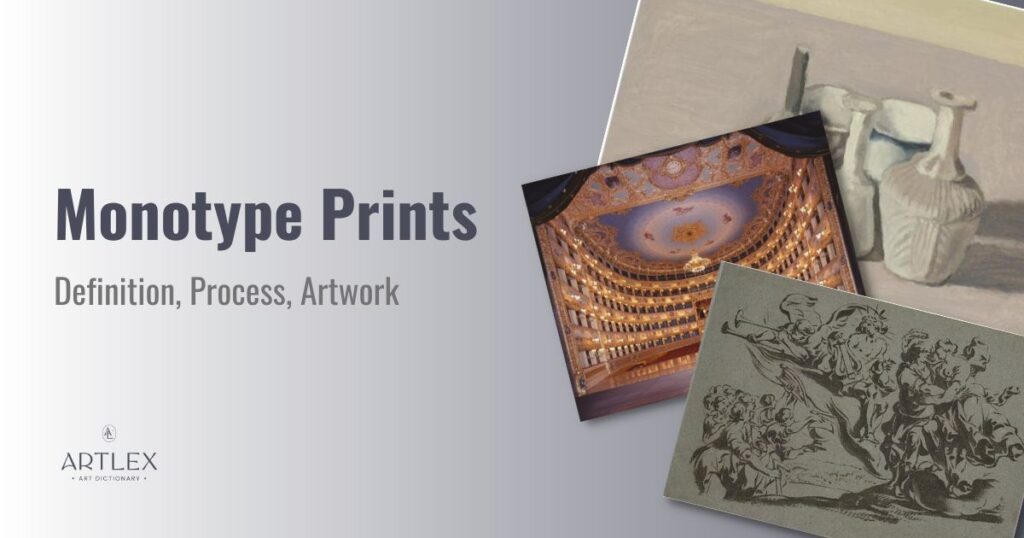
Do you know what monotype printmaking is? It’s a fascinating art form that has been practiced for many years. It’s all about hand-drawing images on a printing surface that can never be precisely duplicated to produce one-of-a-kind works of art. With the development of new materials, this technique has advanced significantly, and artists and printmakers continue to adore it to realize their distinctive and imaginative thoughts.
This blog article will help you understand more the meaning, method, and artwork of monotype printing. We will go over the materials and tools required, the techniques used, and the contributions made by Italian painters to this field of art. We will also offer advice and resources for those who want to try their hand at monotype printmaking.
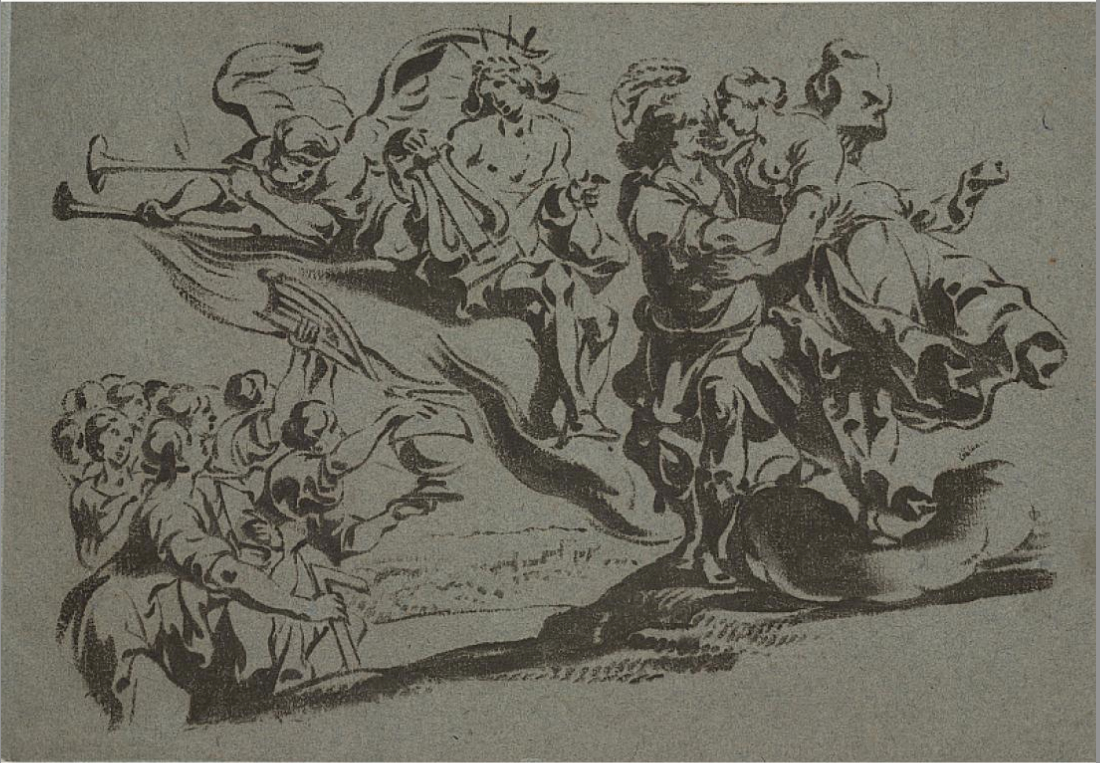
What Are Monotype Prints?
Create one-of-a-kind, hand-drawn designs on a printing surface to create monotype prints, a distinctive style of printmaking. You get to draw your image by hand on a printing surface. Then, you use a printing press, ink slab, and some art supplies to transfer your design onto a sheet of paper. Each print is unique and can’t be duplicated precisely, so you know you’re getting a truly original piece of art.
The monotype printmaking technique has been around for centuries and first gained notoriety in the late 1500s, thanks to some gifted Italian artists. New tools, including acrylic and watercolor paints, as well as new printing presses and inks, have been added to the process over time. Monotype prints continue to be popular among printmakers and artists today who enjoy producing unique, expressive images.
Monotype prints are recognizable for their bright and spontaneous qualities because the artist directly applied ink or paint on a smooth surface, like metal or glass plates. The artist uses various mark-making techniques, including drawing, painting, and a brush, to produce a distinctive image on the plate. Once the plate is applied to some paper, the final print expresses the artist’s marks and activities.
The Monotype Printing Process
In the monotype printing process, the first print, commonly referred to as the “pull,” is essential. It’s customary to regard the first print in a series as the most priceless and distinctive because it’s the original picture that was transferred from the plate to the paper. This initial print displays your marks and motions while demonstrating your abilities, resources, and methods.
To complete the monotype printing process, you will need essential tools and materials such as a printing press, an ink slab, and your art supplies. You will use the printing press to apply pressure to the inked plate and transfer the image onto the paper.
Your ink slab is where you mix and apply your printmaking inks. Other necessary materials include a printing surface, such as a metal or glass plate, printmaking paper, and various mark-making tools like brushes, pens, or knives.
Steps in Monotype Printing
As an artist, you can create a one-of-a-kind print using the Monotype printing process by following these steps:
1. Preparing the Plate
To ensure a smooth and level surface, you first need to clean and polish the non-absorbent plate, such as metal or glass.
2. Applying Ink or Paint
You can use brushes, pens, or knives to apply ink or paint to the plate. You can use techniques such as layering, scraping, or masking to create a complex image.
3. Creating the Image
You produce the image by making marks or sketching on the plate. Depending on the desired outcome, you can work with the ink or paint when wet or dry.
4. Applying Pressure
Next, you place the paper on the plate and set it on the printing press bed. The image is transferred to the paper by applying pressure from the press.
5. Removing the Print
After removing the paper from the press, you will see the final print. This print is one-of-a-kind and original; the plate cannot be used to create another print.
6. Cleaning the Plate
Finally, you clean the plate for the next print or keep it as a specimen of the produced work if it is a one-of-a-kind print.
Types of Non-absorbent Plates
Different non-absorbent surface types are employed in monotype printing. Here are a few of the most typical:
Metal Plates
Due to their durability and capacity for several prints, copper or aluminum plates are frequently used in monotype printing. Make various marks and textures that can be inked, scratched, or etched.
Glass Plates
Despite being more brittle than metal plates, glass plates can produce images that have a delicate, translucent look. They work nicely with various inks and colors and are simple to clean.
Plastic Plates
Plastic plates are less frequent than metal or glass plates. Still, they are employed in monotype printing because they are less expensive, more durable, and capable of holding several prints.
Mylar Plates
Mylar plates are made of plastic with a thin metal coating. These plates are sturdy and suitable for a variety of prints. They are durable and work well with a variety of inks and colors.
Stone Plates
Some artists employ uncommon and unusual monotype printing granite, sandstone, or limestone plates. They are durable and can give prints a distinct texture and feel.
The Printing Surface
The monotype printmaking method depends heavily on the printing surface because it serves as the image’s canvas. To guarantee that the image is correctly transferred onto the paper, the surface must be smooth, non-absorbent, and of excellent quality.
When it comes to printing, the surface you use can significantly affect the outcome. For example, if you print on glass plates, you’ll get a more transparent and delicate image. But, if you print on metal plates, you’ll get a more detailed image because metal plates have a higher level of reflectivity.
There are various printing papers to choose from in monotype printing, each with its unique properties. If you use more absorbent paper, the ink will soak in deeper, resulting in a more intense image. However, the image will be lighter if you use less absorbent paper. The paper’s weight, texture, and surface quality are all essential factors to consider when selecting the right one for your print.
Take into account the following advice when choosing a printing surface for your monotype prints:
- Take into account the kind of image you wish to produce. For instance, use a glass plate for a delicate image and a metal plate for one that is more detailed.
- Consider what kind of ink or paint you’ll be using. Certain types of surfaces work well with particular inks or paints.
- Try out different printing papers to find which suits your image the best.
- Consider the desired image’s size since larger images could necessitate a larger printing surface.
- To achieve the optimum image transfer, always work on a surface that has been thoroughly cleaned.
Common Mediums in Monotype Printing
In monotype printing, oil paint and printmaking ink are two mediums commonly used to create the image on the plate.
Oil Paint
Because it can produce rich, textured, and expressive images, oil paint is a common media utilized in painterly print monotype. Oil paint may be applied in layers with a thick viscosity, enabling the artist to make various marks and effects. The artist has more time to work on the plate before pressing it onto the paper since oil paint takes longer to dry.
Monotype printmaking frequently makes use of a variety of oil-based printing inks. There are conventional oil-based inks made of oil and resin, hybrid acrylic-oil inks, and inks made of acrylic paint and oil, among others. Both kinds of inks have distinctive characteristics and can produce various effects in print.
Printmaking Ink
Printmaking ink is a quick-drying ink used specifically for printmaking in monotype printing. It’s used to create the image on the plate. It comprises a binder, an oil, and certain pigments. It is used on various non-absorbent surfaces like metal, glass, and plastic. Printmaking ink is typically more stable and uniform than other forms of ink, and it may be blended to produce different shades.
Using a roller or brayer to apply printmaking ink to the plate aids in producing finely detailed and accurate images. It can be applied using various methods, including layering, scraping, and masking, and is easily accessible in a broad spectrum of conventional and metallic hues. Oil, watercolor, or acrylic paint can be used alone or in combination with printmaking ink to make expressive monotype prints that are one of a kind.
Oil Paint vs. Printmaking Ink
In monotype printmaking, oil paint, and printmaking ink are utilized, although there are some significant differences between the two. Oil paint may produce a more textured and expressive image since it is thicker and takes longer to dry. On the other hand, printmaking ink is thinner, dries quicker, and can produce a more accurate, detailed image. Different prints can be produced depending on the intended effect and each ink’s unique characteristics.
Ghost Prints and Masking Tape
Monotype printmaking has a special characteristic known as “ghost prints,” commonly referred to as “secondaries.” They are produced by inking the plate, printing the image onto the paper, and then reinking the plate to print the image once more. A “ghost” or “secondary” image is produced on the paper by the second print since it is not as intense as the first. Using this method, the artist can embellish the print with numerous picture layers and textures.
In monotype printmaking, masking tape is frequently used to designate specific sections of the picture that won’t be printed. The artist can use the tape to cover certain plate sections and stop ink or paint from transferring. This enables the artist to build a more intricate image with numerous layers and components.
Mark Making and Thin Layers
Mark-making is a crucial component of monotype printmaking since it allows for creating an image on the printing surface. The surface can be marked in various methods, including using a brush, paint, a scraper, or a pencil. Each technique can produce marks and textures that are distinctive in their own right.
In monotype printmaking, applying thin layers is essential for achieving the most remarkable results. The artist can produce delicate, subtle images with a lot of depth and intricacy by using thin layers of ink or paint. The artist can realize their vision and produce a finished print that pops with bright color and dynamic detail by progressively building up the layers.
Techniques Used in Monotype Printmaking
Monotype printmaking offers artists various techniques to create unique and expressive images. These techniques include:
Drawing
Various sketching implements, such as pencils, charcoal, or ink, can be used by artists to make markings directly on the plate. Depending on the desired impact, these marks might be thin or thick, detailed or loose.
Painting
To get a more painterly impression, artists can use a variety of paints, such as oil paint, watercolor, or acrylic. Apply the paint to the plate and layer it to add depth and texture. You can use brushes, rollers, or other tools.
Scraping
Scraping is a technique for manipulating the surface of an image to create textures, lines, and other elements. Artists can use knives, razors, or other pointed implements to remove the ink or paint off the plate. This method can provide an effect that is more textured or abstract.
Masking
Before applying ink or paint to the plate, artists can cover portions with masking tape, stencils, or other materials. This allows the artist to create intricate designs with clean lines and sharp edges, without the ink or paint spilling into unwanted areas.
Layering
Artists might employ various methods to achieve a layered impression, including adding shades of ink or paint to the plate or gradually building up the image. Layering is an important tecnique of monotype printmaking, as it allows the artist to add dimension and interest to their work, making it more visually appealing and engaging.
Combination
To produce a more detailed image, artists might also mix other techniques, such as layering paint and removing parts of those layers to show the underlying hues.
The Italian Monotype Artists and Their Artworks
Monotype printmaking has advanced thanks significantly in large part to Italian artists. They contributed substantially to the method and were among the first to promote the procedure in the late 16th century. Italian painters have a reputation for experimenting with various inks, colors, and printing surfaces, pushing the limits of what is possible with monotype prints.
Italian artists have produced numerous monotype prints, ranging from delicate, translucent images to more expressive and textured prints. They employed a variety of mediums and methods, such as acrylic, oil paint, watercolor, and printing surfaces. Italian painters are renowned for using mark-making methods like painting and drawing to produce intriguing and dynamic images.
Some of the most famous Italian monotype print artworks include:
“Still Life” by Giorgio Morandi
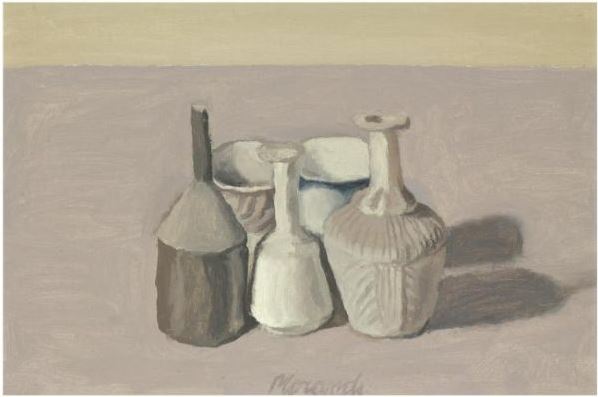
The Still Life portrays a simple setup of a vase and a few bottles on a table. Giorgio Morandi worked with a limited color palette and used mark-making techniques such as cross-hatching and stippling to add depth and texture to the piece.
“Concetto Spaziale” by Lucio Fontana
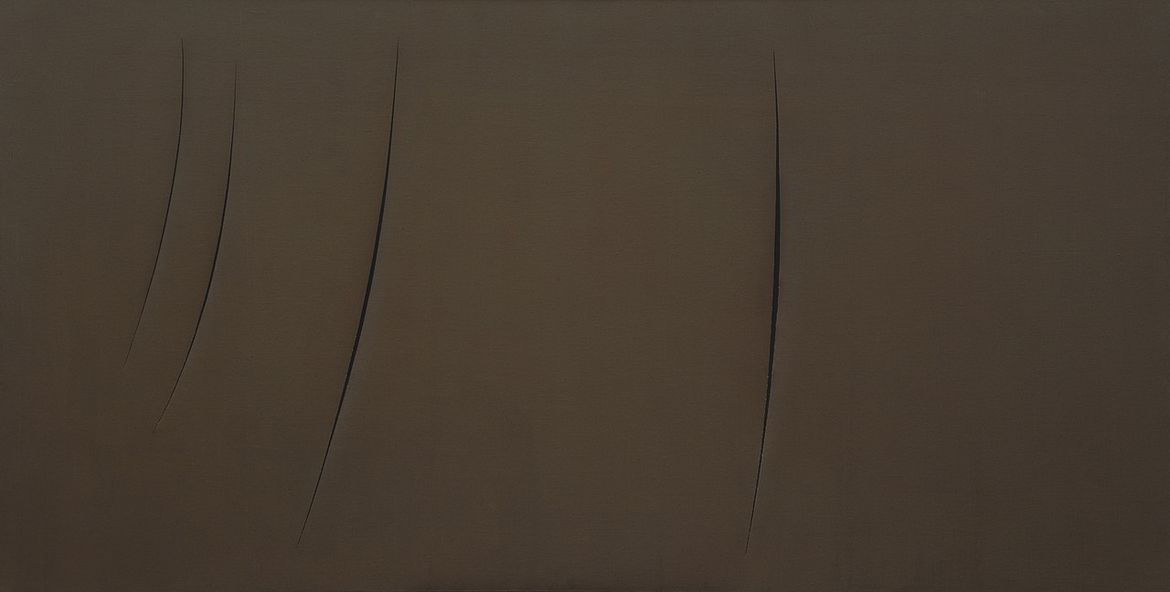
The Concetto Spaziale exemplifies Fontana’s abstract and minimalistic style. It has light and dark fields that contrast, creating a sense of depth and movement. A single slash across the center distinguishes Fontana’s artworks.
“La Fenice” by Giovanni Battista Piranesi
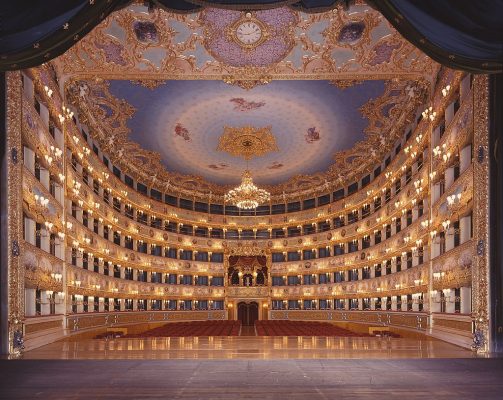
This monotype print is an architectural print of Venice, Italy’s famous theater La Fenice. It is a detailed and accurate representation of the theater’s design and architecture and an example of Piranesi’s famous monotype printing works.
Final Thoughts
This blog post discussed monotype prints’ definition, process, and artwork. We discussed the distinct characteristics of monotype prints and the tools and materials required for the process. We also talked about the various techniques used in monotype printmaking, such as oil paint, and the significance of the printing surface. We also discussed ghost prints and masking tape, mark making and thin layers, and Italian artists’ contributions to the monotype printmaking process.
We encourage you to try this exciting and fulfilling art form for yourself. Monotype printmaking allows you to create one-of-a-kind images that express your creativity. Experiment with different materials and techniques to find your style.
If you’re interested in learning more about monotype prints, plenty of resources are available. You can find tutorials, videos, and blogs online or enroll in classes or workshops at art schools and printmaking studios. There are also many books and publications available that can provide in-depth information and inspiration.
In conclusion, monotype prints are a unique and beautiful art form that artists and art lovers alike can appreciate. By understanding the definition, process, and artwork of monotype prints, you can push the boundaries of what can be achieved and develop your unique style. The online and offline resources make it easy for you to deepen your understanding and start creating your monotype prints.
